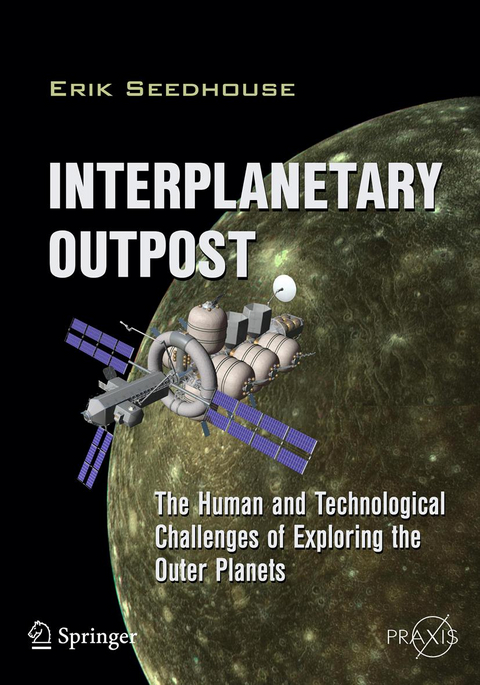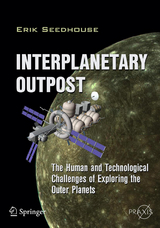Interplanetary Outpost
Springer-Verlag New York Inc.
978-1-4419-9747-0 (ISBN)
Erik Seedhouse is a Norwegian aerospace scientist whose ambition has always been to work as an astronaut. After completing his first degree in Sports Science at Northumbria University, the author joined the legendary 2nd Battalion the Parachute Regiment, the world's most elite airborne regiment. During his time in the "Para's", Erik spent six months in Belize, where he was trained in the art of jungle warfare and conducted several border partols along the Belize-Guatemala border. Later, he spent several months learning the intricacies of desert warfare on the Akamas Range in Cyprus. He made more than 30 jumps from a Hercules C130 aircraft, permored more than 200 abseils from a helicopter, and fired more light anti-tank weapons than he cares to remember! Upon returning to the comparatively mundane world of academia, the author embarked upon a master's degree studies by winning prize money in 100 km ultradistance running races. Shortly after placing third in the World 100 km Championships in 1992 and setting the North American 100 km record, the author turned to ultradistance triathlon, winning the World Endurance Triathlon Championships in 1995 and 1996. For good measure, he also won the inaugural World Double Ironman Championships in 1995 and the infamous Decatriathlon, the world's longest triathlon - an event requiring competitors to swim 38 km, cycle 1,800 km, and run 422 km. Non-stop! Returning to academic once again in 1996, Erik pursued his Ph.D. at the German Space Agency's Institute for Space Medicine. While conducting his Ph.D. studies, he still found time to win Ultraman Hawaii and the European Ultraman Championships as well as completing the Race Across America bike race. Due to his success as the world's leading ultradistance triathlete, Erik was featured in dozens of magazines and television interviews. In 1997, GQ magazine nominated him as the "Fittest Man in the World." In 1999, Erik decided it was time to get a real job. Heretired from being a professional triathlete and started his post-doctoral studies at Vancouver's Simon Fraser University School of Kinesiology. In 2005, the author worked as an astronaut training consultant for Bigelow Aerospace in Las Vegas and wrote Tourists in Space, a training manual for spaceflight participant. He is a Fellow of the British Interplanetary Society and a member of the Aerospace Medical Association. Recently, he was one of the final 30 candidates of the Canadian Space Agency's Astronaut Recruitment Campaign. Erik currently works as a manned spaceflight consultant, triathlon coach, and author. He is the Training Director for Astronauts for Hire (www.astronautsforhire.org) and plans to travel into space as a paid astronaut. In addition to being a triathlete, sky-diver, pilot, and author, Erik is an avid scuba-diver and mountaineer and is currently pursuing his goal of climbing the Seven Summits. Interplanetary Outpost is his eigth book. When not writing, he spends as much time as possible in Kona on the Big Island of Hawaii and at his real home in Sandefjord, Norway. Erik is owned by three rambunctious cats - Jasper, Mini-Mach, and Lave - who each provided invaluable assistant in writing this book (!).
Potential destinations.- Mission objectives.- Mission architecture.- VASIMR: the radical rocket.- HOPE hardware.- Descent and landing.- Selecting and training an interplanetary crew.- Biomedical and behavioral aspects of traveling to Callisto.- Voyage to Callisto.- The surface mission: establishing an interplanetary outpost.
| Reihe/Serie | Space Exploration | Springer Praxis Books |
|---|---|
| Zusatzinfo | 75 Illustrations, color; 9 Illustrations, black and white; XXVIII, 253 p. 84 illus., 75 illus. in color. |
| Verlagsort | New York, NY |
| Sprache | englisch |
| Maße | 168 x 240 mm |
| Themenwelt | Sachbuch/Ratgeber ► Natur / Technik ► Weltraum / Astronomie |
| Medizinische Fachgebiete ► Radiologie / Bildgebende Verfahren ► Radiologie | |
| Naturwissenschaften ► Physik / Astronomie ► Angewandte Physik | |
| Naturwissenschaften ► Physik / Astronomie ► Astronomie / Astrophysik | |
| Technik ► Luft- / Raumfahrttechnik | |
| ISBN-10 | 1-4419-9747-4 / 1441997474 |
| ISBN-13 | 978-1-4419-9747-0 / 9781441997470 |
| Zustand | Neuware |
| Haben Sie eine Frage zum Produkt? |
aus dem Bereich




